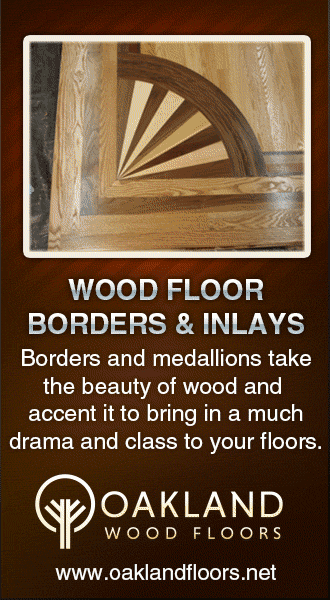If you are seeking to add character and value to your home by adding wood flooring, you have a few different types to choose from. Primarily your options fall into these three categories: Solid hardwoods, engineered wood flooring and laminate flooring.
In solid hardwoods, each plank is made of solid wood and is milled from a single piece of timber. This creates a classic look and allows for the most custom design. Engineered wood can appear almost identical to hardwood, and is comprised of three to five layers in the form of a plank or strip. The top layer consists of premium hardwood that is adhered to a core, which can be made of a variety of materials.
Engineered wood flooring is much more versatile and easy to install. Finally, laminate flooring just uses the image of wood on its surface and is composed mostly of wood by-products and a resin glue. This option is the cheapest to install.
Solid hardwood floors are a great choice for creating an elegant space on the ground level or above. This wood is not suitable for below-ground installations, as it is vulnerable to water and temperature fluctuations. However, prefinished hardwood flooring is protected with many coats of a urethane finish, making it more durable. This allows for installation in high-stress areas like kitchens. If a hardwood floor is not factory-finished it can always be sanded down and refinished to look like new, so it never has to be completely replaced.
Solid hardwood floors come in many style options. Exotic hardwoods, or woods from around the world, offer unique wood grains. Other styles include “handscraped” and distressed hardwood, which are given a distressed, antique appearance by hand or by machine, respectively. Parquet floors, made of geometric, rectangular blocks of wood, are another option.
Engineered wood floors can be the best choice for remodeling because of the variety of installation methods that can be used, the variety of surfaces that it can be applied to and its durability. Engineered wood can usually be installed over an existing floor, and even on concrete. Unlike hardwood, it can be used in basements and installed with radiant floor heating. Patented installation systems make installation much faster, and replacing boards easy. Engineered wood can even be “floated” over a surface, held in place by the edges of the room and the boards that are locked together. Engineered wood products often cost more than hardwoods, but they mimic the beautiful features of hardwoods, even exotics, and are extremely hardy.
Laminated floors are the least expensive and most convenient option for many. They can be used in any area of the home, and are often installed in one day. They are the most durable choice and require almost no maintenance. Laminated floors are eco-friendly because they use wood and paper by-products, are installed without use of chemical glues, and have recyclable content.
Whichever option you choose, a having wood flooring installed in your home will provide you with floors you will be proud of for years to come.



